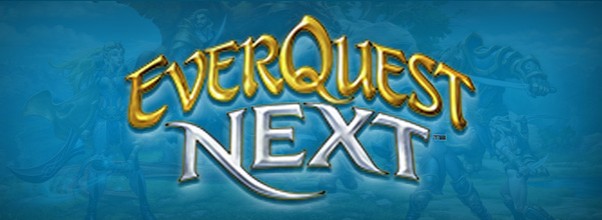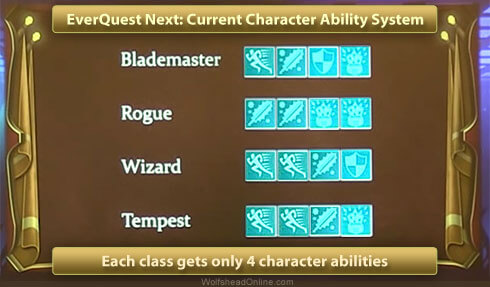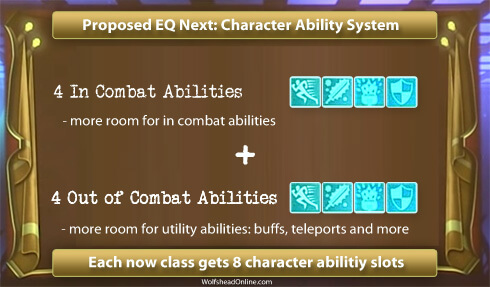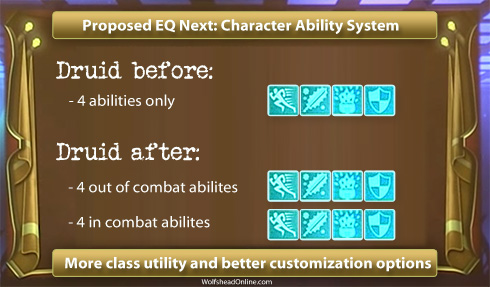One of the highest objectives a fantasy MMORPG should strive for is the creation of a vibrant and passionate community. For the player, the benefits of a robust community are felt both within the game as the quality of the community itself gradually becomes the draw and outside the game as players congregate around websites, forums and even meeting in real life. For the developer, virtual worlds with healthy communities act as a magnet for new players and have the added bonus of higher player retention.
A MMORPG that fails to value and nurture community is selling itself short and may as well just call itself a single-player video game.
Developing a community in and around your virtual world is more than about involving the community in decision, hiring convivial community managers and leveraging social media — it has to be a philosophy that permeates every facet of your virtual world.
Getting to the Heart of the Matter
Community in a MMORPG is all about the interaction of players with each other. It all boils down to one question:
Does interaction matter?
If interaction is pointless and players can achieve their goals without the help of other players then you have an unhealthy and purposeless community. In this virtual world, players are just like ships passing in the night.
If the answer is yes, and players actually need each other to progress their avatars then you have a healthy and purposeful community. In this kind of virtual world, players are essential to everyone’s success. Congratulations! You have done your job as a MMO designer.
Of course it is not that simple. The design of every MMO is a tug of war between the demands of satisfying the natural appetite of the player for autonomy and creating conditions that require players to need each other. This is the great existential design battle of player centric design versus world centric design.
I believe the pendulum has swung too far towards in creating player centric MMOs that focus too much on serving the interests of single players at the expense of the health of the player community. MMOs with healthy communities are far better MMOs than those that cater to the mindset of placating single players. For me, that’s a non-negotiable principle in MMO design.
Learning from the Human Experience
The study of the history human experience is helpful when trying to understand why player-to-player interaction is so vital in a virtual world. In order to survive and thrive in the real world, humans associate with each other and form communities. Good communities survive and thrive by leveraging the unique abilities of individuals and create efficiencies based on the resulting synergy. So too it is true of players in virtual worlds.
Given that one of the main selling points of a MMORPG is that massive numbers of players are coexisting in a fantasy virtual world together, it therefore follows that the creation and nurturing of a good community should be one if its highest ideals.
Unlike the single player video game designer who caters to the individual, the solemn duty of the virtual world designer should be to create a MMORPG that creates similar advantages for those who group together and disadvantages for those that choose to remain alone.
Combat is the Core
The classic group of skilled adventurers coming together as a cohesive group using combat to overcome difficult challenges is the ultimate form of expression in a fantasy MMORPG. No other activity in a MMORPG has as much depth and complexity as combat. Generally players in groups are exposed to far more enjoyment, challenges, opportunities, risk and reward than those who do not group. Given this reality, a MMO designer should be doing all they can to incentivize players to join together on the field of battle.
Since the core activity of fantasy MMORPG’s is essentially adventuring via combat, the mechanics of combat should be designed to promote community whenever possible. Successful outcomes in combat are the result of a number of factors. One of these is the ability for group members to effectively communicate strategy and situational status. This is achieved by requiring and rewarding good player interaction.
Another success factor in combat is actually requiring some effort from players to recruit and mobilize other players to defeat powerful enemies. We’ve seen this happen in class based MMOs like World of Warcraft that have all but eliminated player-to-player communication from the group equation via convenience based Dungeon and Raid Finder mechanics.
Why the Class System and Player Groups Go Hand in Hand
What distinguishes combat in MMORPGs compared to action video games is that players can choose classes with iconic roles that are designed to work in concert with other players. Traditional RPG classes were originally designed to be part of a balanced group. The class system is a time-tested, proven system that millions of players have enjoyed for many years in various forms across many gaming mediums.
Not only does grouping make sense in the real world, it makes perfect sense in a fantasy virtual world. Once the benefit of grouping together is seen as necessary for advancement, players soon figure out that the specialization of roles within a group is the optimum strategy for even more efficient progress. The inherent certainty about unique class roles gives the player a sense of order and legitimacy about the virtual world they inhabit. Everyone knows their place and worth in this world; each class has a specific role and purpose to play. Wizards do not tank, warriors do not do ranged damage and so on.
A high level of class interdependence is achieved when players band together to leverage their class’s strengths and minimize their weaknesses. The result is a cohesive community courtesy of thoughtful and intelligent design.
The opposite of this is a fantasy virtual world where every class is self-sufficient and independent. Nobody needs anyone. The result is a world of self-absorbed, anti-social soloers with a shallow community.
What does this have to do with EverQuest Next?
Many of us are worried that the designers of SOE’s proposed EverQuest Next are treading into dangerous waters by discarding too many of the classic RPG fundamentals in favor of untested mechanics and features based on popular trends. There’s an old saying: if it ain’t broke, don’t fix it and another one: don’t reinvent the wheel. I believe both of these maxims describe the current in progress design of EQ Next.
Problem 1: An Apparent Lack of Class Interdependence in Combat
One of my biggest concerns with the current design of SOE’s EverQuest Next is the apparent lack of consideration of the benefits of class interdependence.
While EQ Next devs like Jeff Butler and Darrin McPherson have stated that groups will still be required to take down certain mobs, requiring a group is not the same as building a class system that encourages class interdependence. As mentioned earlier, class interdependence is achieved when classes have specific roles and gravitate toward each other as a way to mitigate their weaknesses and enhance their strengths. The sum of the parts is greater than the whole.
A classic example of a well-balanced group is the following scenario: First there is the plate wearing warrior that tanks, does low damage, taunts the enemy and absorbs enemy damage. Meanwhile he’s being healed by support classes such as clerics, druids and shamen who usually wear lighter armor and are away from the center of combat. At the same time this is happening, other classes with lower armor class are dealing damage at various proximities from the enemy. Throughout all of this there may be other classes are doing crowd control, debuffing the enemy and casting damage over time spells.
A well designed class system has classes that can substitute for each of the various roles. But what are the class roles in EQ Next? Nobody really knows. Based what we have seen of EQ Next (it may change when more info is released) there is only one role for classes: damage.
SOE has announced there will be a mind-boggling 40 damage classes at release. It would be like Baskin-Robbins claiming they have lots of variety by offering 40 different flavors of vanilla ice cream.
Will they be truly unique in role or just variants of a damage dealing class?
I suspect each class will be primarily a damage class with limited support capability.
Why are they doing this? I believe they are looking to adopt a pickup and play philosophy in order to appeal to the masses that have made MOBAs like League of Legends and SMITE popular. It is in these non-MMORPG games that SOE has found inspiration for class roles which are far more simplistic with limited support utility and are essentially damage-centric. Only time will tell if this will work.
Problem 2: No Class Interdependence Outside of Combat
Astute observers of the EQ Next Class panel held at SOE Live will note that the devs did not address the roles of classes in out of combat situations. Most if not all of the presentation was about combat. Many EQ veterans are concerned that a MMORPG with the name “EverQuest” should have recognizable classes that promote socialization and community via class abilities that bring value to groups; this is what we expect from a MMO that bears the name of EverQuest.
Nothing was mentioned of classes like clerics, druids and shamen being able to resurrect their fellow players. Nothing was mentioned about group teleportation abilities that druids and wizards had in EverQuest. Nothing was mentioned about the myriad of useful buffs and other special abilities like corpse finding and summoning items. Nothing.
The lack of information provided by SOE regarding class interdependence can only mean three possible things:
- they have chosen not to divulge it
- they have not even thought about it
- they have no intentions of supporting class interdependence as a MMO design pillar
As someone who fell in love with EverQuest’s original iconic classes I have to wonder:
- what will healing and support classes like druids, shamen, wizards, enchanters and others play like using the simplistic EQ Next design structure of only 4 weapon ability slots and 4 character ability slots?
- where are all those spells, buffs and abilities going to go in the proposed EQ Next MOBA-like user interface?
- will those classes even exist?
The answer may be that they do not intend to have those classes at all. Even more sobering is the fact that SOE may not even care about class interdependence and have decided that it not important and see its structure as a barrier to accessibility. If that is the case then I believe they are making a huge gamble discarding the concept of interdependency. Not only that, they would be wasting a golden opportunity to attract fans of the original EverQuest and EverQuest 2 by failing to offer signature EQ classes.
Is there any hope, can anything be done?
I believe there is a solution. But first let me talk briefly about the proposed EQ Next class ability system.
EQ Next Current Class Abilities
One of the highlights of SOE Live was the EQ Next Class panel. Two design ideas struck me as being sound:
- No More Whack-a-mole Hotbar Ability Combat – Instead of having to look at your ability hotbars and waiting for them to refresh, the devs want players to focus more on combat itself and be more situationally aware.
- Class Ability Minimalism – Instead of the screen clutter and ability inflation that many MMO companies have saddled their player classes with, EQ Next classes will have a maximum of 8 buttons: 4 buttons to press for weapon abilities and 4 more buttons for character abilities
I wholeheartedly support both of these design decisions and the thinking behind it.
One can theorize that with both of these decisions, SOE has been largely inspired by the pickup and play philosophy that has made the MOBA genre (League of Legends, Smite) so popular lately. Having a total of 8 abilities also corresponds very well to the Playstation controller which also has 8 main buttons.
Class Ability Inflation
For years MMORPG class design has seen an explosion of class abilities that have become unwieldy, unmanageable and tedious for players. I currently play a guardian in Lord of the Rings Online and I have scores of abilities that fill up multiple hotbars. When you add in food, potions and portal abilities it becomes almost impossible to figure out what does what button does if you are gone for a few days.
SOE’s decision to revert back to a maximum of 8 skills — 4 weapon and 4 character – hearkens back to the brilliance and simplicity of the original EverQuest that only allowed classes to have a few combat skills and 8 spells memorized at any given time. This contrasts with the explosion of class abilities available courtesy of the current give the players what they want MMO game design mentality.
The Limitation of EQ Next Character Abilities
Despite the benefits of having a minimalist class ability system there is a flaw. With only 4 character abilities allowed at any given time, not only will there be any slots available for buffs that encourage class interdependence, many classes will be unfairly penalized and unable to reach their full potential.
Example One: The Rogue
Let’s look at an archetypal class: the rogue. The rogue isn’t what you’d normally call a community building class but the extra utility of the rogue — damage notwithstanding — is very valuable to groups. Typical EverQuest core non-combat abilities for rogues include:
- sneak
- pickpocket
- pick lock
- sense traps
- disarm traps
With the current EQ Next system, rogues would not have enough room on their 4 slot class ability slots to include all of above listed utility abilities. Given the fact that fast damage in EQ Next is king, a rogue would be seriously disadvantaged if they loaded up their limited slots with out of combat abilities instead of in-combat damage related abilities. A class like a rogue would lose a lot of their unique character with such a limited number of ability slots. Consider too the lost utility that they would no longer bring to a group with the current system.
Note: other MMOs like WoW have given rogues additional utility via crowd control abilities. This is just more evidence that a rogue with 4 character ability slots won’t have many tricks up his sleeve.
Example 2: Buffing Classes
One of the biggest community building mechanics in the original EverQuest was that players could instantly help the players around them by buffing them with stat and movement enhancing attributes. Mana generating buffs like Kodiac’s Endless Intellect (KEI) boosted the mana regeneration rate of players. Other buffs such as Spirit of the Wolf (SoW) that increased movement speed were also tremendously popular.
Buffing brought players together. It even created trade and commerce opportunities for enterprising players that charged for buffs, teleports and summoned items.
With the current system slated for EQ Next, traditional EverQuest classes like enchanters and shamen would be severely handicapped. I would go as far to say that they would be unrecognizable.
The community that results from class utility both in and out of combat is vital to a fantasy MMORPG. The ability to buff imparts uniqueness, value and worth to a class. It also gives increased worth to players who lack the skills to play other classes and instead choose to focus on playing support roles.
The contribution that buffing/utility/support classes make towards increasing class interdependence and building community is incredibly valuable and one of the main reasons that the design of the original EverQuest was so inspired.
The Solution: 4 In Combat Ability Slots and 4 Out of Combat Ability Slots
When you are playing a MMORPG you are either in combat or out of combat. When a player is in combat they are using combat related abilities so it makes perfect sense to have 4 dedicated slots for combat.
Of course when a player is out of combat chances, they are most likely to utilize their non-combat abilities such as buffing, invisibility, teleporting, etc. With my proposal there would be an additional 4 slots added for out of combat abilities.
Given that combat is an either or state, with my proposed system the player would only see 4 slots on the screen at any given time depending on the state they are in. This would preserve the benefits of the current EQ Next minimalism design ethos of having only 4 character slots available at any given time.
The player would set up their character abilities both in combat and out of combat beforehand using a special character ability panel. This could be done at a trainer, in a town or city or out of combat. There would have to be a significant cooldown on ability swapping to prevent players from cherry picking all of the most powerful buffs and thereby destroying class interdependence.
A potential issue of concern is that some players might want to fill their out of combat character slots with powerful buffs. However, by doing this they would be limiting their characters in other ways. This could be prevented by imposing ability economy restriction making caster buffs require a higher caster attribute skill based on the core class of the player. Class and combat lead Michael Mann mentioned that character abilities would be subject to the notion of class economy.
Update: I should have made the following point a bit clearer: the current SOE design that each character would have 4 “weapon” skills would remain the same. Thus the total number of abilities that the player has access to at any given time is still 4 weapon abilities + 4 character abilities. My proposal is that character abilities (which are all non-weapon based) would still follow the SOE design of having 4 visible at any given time with the difference being that 4 predetermined abilities would be available for in-combat and 4 for out-of-combat. Yes you now have 8 character abilities but based on what combat state you are in (in or out) you would only have access to 4 at a time. In addition, the player could choose to have a non-combat ability in the “combat” panel; one example of this being useful could be a wizard’s evacuation spell. It could be quite useful in either state. The goal here is to allow for class customization based on the two most important states in any MMORPG: being in-combat and being out-of-combat. It also retains the elegance and simplicity and user interface economy of the vision of the EQ Next design team without adding 4 extra character ability slots on the screen.
More EverQuest Please
The reason I even care about EverQuest Next is that I cared deeply about the original EverQuest. EverQuest wasn’t just a game, it was an experience. In honor of what it meant to me and all the friends I made while adventuring in Norrath, I really want EQ Next to succeed. But SOE needs to do more than just tacking on the EverQuest name to a new MMO to ensure its success — it needs to bring back more of the fundamental elements that made EQ so groundbreaking and memorable. I believe that class interdependency is one of those core values that made EQ great.
With such a rich legacy of amazing features that were ahead of its time, it seems such a shame that there is so little of the spirit of EverQuest in EQ Next. EQ was more than just the features, it was the timeless principles and steadfast values behind the design that that made it so enigmatic and powerful.
But let’s not forget, the real treasure of EverQuest was the players. We all saw those memorable and moving moments in My EverQuest Story videos shown at the EQ Next reveal in Las Vegas. It was wonderful people like them that were attracted to the magic of Norrath. They believed because they had a world they could believe in.
Conclusion
What puzzles me is that so much of the richness and depth in the original design of EverQuest has been seemingly ignored and dismissed. The unique EverQuest experience, the quality of community and emergent gameplay that resulted has been unsurpassed by any MMO since. It is perplexing to me that this vast legacy has not been leveraged and implemented for EQ Next.
While I respect Jeff Butler, Darrin McPherson and the design team for trying to create something new to revitalize the EverQuest franchise, I really think they need to do much more to appeal to the incredibly loyal fanbase that is patiently waiting to pick up their swords and staves to heed the call of adventure in Norrath once again. Many of them genuinely want to embrace EQ Next but are not happy with what they have seen so far.
Even though I can appreciate the widespread appeal and popularity of MOBA games such as League of Legends and SMITE, I wonder how much of that combat system is transferable to a MMORPG without losing the spirit of what makes a MMORPG unique. The video game industry is very susceptible to being distracted by fleeting trends. A few years ago everyone was seeing millions of dollars that social Facebook games like Farmville was making and suddenly everyone became gung ho to make a social media game to cash in.
What will happen when the MOBA bubble bursts and EQ Next is left with a combat system that nobody wants? What about the people that currently play MOBAs? How will their migration impact a virtual world like EQ Next?
While it’s tempting to design player classes to focus solely on combat, it’s important to remember that a significant portion of the time a player spends in a fantasy virtual world is out of combat. Therefore, out of combat character abilities such as resurrections, buffs, teleporting, summoning items and corpse finding all play an vital role both in preparing for combat and in enhancing non-combat related activities that helps foster class interdependence and creates community.
With my proposed simple in combat/out of combat character ability system, suddenly there is room for helpful class abilities that bring players together and increase their value to each other. Socialization is required because people have to ask for buffs. People get to know each other and become good friends. Some even get married!
By giving classes more options out of combat, class uniqueness is enhanced as it allows them to focus more on combat when they are actually in combat instead of wasting precious slot space on a utility ability when it’s not needed.
More importantly, by adopting this system EQ Next takes inspiration from the genius of the original EverQuest and provides a sense of continuity of design which fosters player interaction and builds community. Suddenly iconic EverQuest legacy classes like priests, druids, shamen, bards, magicians, wizards and others are possible and realizable! Additionally, it offers an olive branch to EverQuest veterans that they can readily understand, support and enjoy. Everybody wins.
-Wolfshead







My apologies to anyone that tried to post a comment. There was a WordPress plugin that was preventing users from doing so. It has been fixed. I’m sorry for the inconvenience.
-Wolfshead
I’m curious if I misunderstood your solution or not. My other post might be redundant if I am saying the same thing as you, just in a different way.
You said that the character would only see 4 abilities at any given time depending on the state they are in. Are you suggesting that we really only have 4 visible Class Abilities and no Weapon Abilities? Or, did you just feel no need to really mention the 4 Weapon Abilities?
Current System:
(4 WepAbs x 2 Wep) + 4 ChrAbs
System I hope to see:
(4 WepAbs x 2 Wep) + (4 OutofCom ChrAbs + 4 InCom ChrAbs)
Hopefully the shortened words aren’t too confusing. Is the second system basically what you were trying to explain?
Hello Seanidor,
To clarify, my solution is that along with having 4 weapon abilities, we have 4 character abilities available only in combat and 4 other character abilities available only out of combat.
This is the system that you hoped to see as you mentioned in your post.
In response to your solution, I think it might be better to have 8 in-combat abilities as well as 4 out-of-combat. Your idea sounds good but I think it should be tweaked a little bit. Having only 4 in-combat abilities would probably be a bit too limiting.
First, what they could do is make it so the 4 [Weapon Abilities] are always available in and out of combat, which is probably already true. The Weapon Abilities would most likely be your damage abilities that never change except when switching weapons. You always need some combat abilities in and out of combat otherwise it makes it kinda hard to initiate combat.
Next, they could make it so you can choose 4 in-combat AND 4 out-of-combat [Class Abilities]. When you are in-combat the 4 combat icons on the hotbar will be visible, but once you leave combat the out-of-combat icons will show up in their place.
The out-of-combat Class Abilities would be things such as buff/utility/support to help player interdependence. The in-combat Class Abilities “could” also be buff/utility/support as well damaging ones. The developers would have to differentiate which abilities are more fitting for in and out of combat though. I imagine it would be a lot of work to add even more abilities for each class though.
Exactly. This is what I proposed. Thanks 🙂
This is a very good paragraph, it lacks one major insight though. In a virtual world the ‘individuals’ are not the players they are the characters. The biggest flaw in multi-class systems, and EQ Next is definitely no exception, is that they remove much of the opportunity for ‘unique abilities’ from the characters. They tend to create an amorphous character that throws the individual out of the virtual world and back to the real world player. Situational awareness is a symptom of this, the players awareness not the characters.
Naturally players assume the roles of characters.
What intrigues me is your analysis of the multi-class system. I agree with you here. I believe character identity will be weakened as a result as most players will gravitate to the “win” class configurations.
I don’t agree that multi-classing will weaken player interaction. Sure, there will be a class of players that want to solo, and this would add to flexibility to do that. What I think you are discounting is how combat will occur and what it will mean to be successful at the core game. Ultimately, being successful in group content will mean delegation and specialization of roles. With the limited ability/ weapon slots, players will have to be careful with the abilities they slot in. I don’t see a system here that reward generalists. In addition, not everyone will want to DPS. Different strokes for different folks. You will still see the the trinity emerge from this, because as you’ve said, it is time tested. The main difference I see is that classes will be player defined and not explicitly developer designed. If there is a role to be filled, the player base will find the most efficient way to fill it. If it ends up being a GW2 zerg-fest SOE has don’t something very wrong. I think they have carefully studied what works and what does not, and they would consider it a failure if EQN went the way of GW2.
You can get player interdependence with other means, so class system can be freed to be something different and there are more roles in games than just tank DPS and heal.
In a simplistic example you can create a trinity out of pressure, burst and control, which in most cases, makes it easier to design itemization and class balance around. And in this kind of a system you could have tanks, DPS and healing, but instead of them being the core design, they would be just an expression of the core design.
But that being said the way SOE talks about the non-trinity worries me. It looks like they can’t detect the problem with the WoW’s implementation of trinity and throw the whole concept out as inherently bad design — It wasn’t that the roles were undesirable because of their base mechanics, but because WoW didn’t have the reward structure (especially in classic) to support those roles.
DPS items allowed you to experience the whole width of the game (solo, group, PvP, PvE) in an effective way where as tanking rewards only made you better at tanking in a group. And because of the low frequency of usable drops and the high demand for the versatile drops (40man raids with 70% of the group being DPS), tanks and healers could easily go a whole expansion of being only useful in raiding environment.
About multiclassing — I fully agree with your analysis. But also I’d like to add something about the old system:
I don’t like the way players and devs think of classes during and after the WoW era. It seems like they understand that players want to express themselves with the class of choice in an RPG sense. That’s why you get two classes which seem to be essentially the same (like death knights and paladins, like warlocks and mages), but what bothers me is that this concept isn’t fully realized though.
Many people would want to play as warrior who fights for the necromancers, or a mage who fights for the city militia. The classes should be only about building a package (through talents) of what kind of gameplay you enjoy (melee, ranged, tank, dps, heal, burst, control, pressure, mobility, safety) and the cosmetic side should be separated from it to allow players to freely represent a faction they choose. There’s something interesting about the prospect of a fully self-sufficient mages guild.
But multi-classing is not really the answer. Sure, you can create more customization through it but your and game balance suffers a great deal when you can dual class away the weaknesses of one class. And your players character integrity and sense of RP will suffer as the system constantly teases you to min-max the hell out of it.